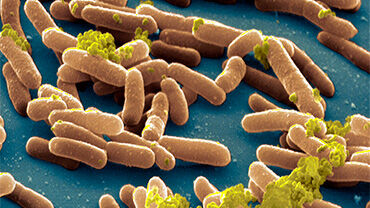Twelfth external quality assessment scheme for Salmonella typing
Infection with Salmonella spp. is the second most reported zoonotic disease in humans with 60 050 reported cases in 2021 in the European Union (EU) and Salmonella is associated with the highest number of foodborne outbreaks. The overall EU trend of salmonellosis incidence for the years 2017 to 2021 have not changed significantly. To prevent foodborne diseases such as salmonellosis, human surveillance systems at different levels are essential to monitor the disease and to have an early detection and response to outbreaks.
Executive Summary
ECDC has set surveillance objectives to monitor trends and perform multinational outbreak detection of salmonellosis and other foodborne pathogens. In addition, objectives are to contribute to evaluation and monitoring of prevention and control programmes, to identify population groups at risk and in need of targeted prevention, to contribute to the assessment of the burden of disease, to generate hypotheses on sources and transmission modes, and to identify needs for research projects.
The fulfilment of these surveillance objectives relies heavily on the data provided by the National Public Health Reference Laboratories (NPHRL) of the EU and European Economic Area (EEA) countries. To monitor the typing methods used, data quality and their comparability as well as the capability of the laboratories performing these
methods, ECDC commissions an annual External Quality Assessment (EQA) scheme for the serotyping and molecular-based cluster analysis of Salmonella.
This 12th external quality assessment scheme for Salmonella typing (EQA-12) was subcontracted to the National Institute for Public Health and the Environment (RIVM) in the Netherlands and comprised a serotyping part and a molecular typing-based cluster analysis part. Participants were expected to use their routinely applied methods for
both parts of the EQA and were assessed for their performance. Serotyping consisted of 12 isolates with different carefully selected serovars. For cluster analysis 10 S. Enteritidis isolates were selected, containing cluster and noncluster isolates, mimicking a real outbreak situation originated at a wedding dinner. In addition, raw reads of five
isolates were made available to the participants that use whole genome sequencing (WGS) for cluster-analysis. These isolates acted as food isolates and participants were asked which food product was likely causing theoutbreak.
For serotyping, 24 laboratories participated and 79% (19/24) of these laboratories used phenotypic serotyping based on antisera agglutination, 17% (4/24) used serotype prediction from WGS data and 4% (1/24) applied a combination of genetic serotyping using Luminex, supplemented with phenotypic methods. Performance was high
for most laboratories, with 12 laboratories achieving performance scores of 100% and eight of 92%. The four laboratories that have the lowest performance values (<92%) were all using phenotypic methods, and for three out of four, their type of errors indicate that less specific antisera were used. However, the choice of phenotypic serotyping or WGS-predictive serotyping did not influence overall performance (p=0.1134) or the ability to type particular serovars (p=0.418-0.818).
Twenty laboratories took part in the molecular typing-based cluster analysis, which was the same number of participants than for the last EQA (EQA-11, 2021). The proportion of participants that used WGS for their cluster analysis increased from 70% to 85% compared to EQA-11, while the number of participants that applied multiple
locus variable-number tandem repeat analysis (MLVA)-based cluster analysis decreased from 40% to 15% and pulsed-field gel electrophoresis (PFGE)-based cluster analysis participants decreased from 30% to 10%.
In the WGS-based cluster analysis, most participants 14/17 (82%) applied a gene-by-gene approach, while the other 18% (3/17) applied single nucleotide polymorphism (SNP) typing. In total, 15 different combinations of platforms, approaches, kits, cluster analysis tools, typing schemes, and cluster cut-offs were used. However, methods used did not affect the high performance, with an overall performance score of 98% correct cluster assignment for provided isolates and provided sequences. All but one laboratory had 100% performance in assigning provided isolates to clusters, and one additional laboratory did not assess a sequence because it was considered to be of insufficient quality.
Three laboratories applied MLVA-based typing and all produced identical MLVA profiles, indicating a high technical performance of 100%. However, overall performance for cluster assignment of provided isolates was lower (74%) than with WGS-based cluster analysis (98%, p=0.0021), as two genetically unrelated isolates would be included in
the outbreak cluster based on MLVA profiles. Therefore, participating laboratories had good capability in applying MLVA, but the resolution of the technique itself is too low to correctly assign isolates to clusters.
Two laboratories applied PFGE-based cluster analysis. The performance of these laboratories was compared to each other, which confirmed that PFGE is not portable and interlaboratory comparability was low. Overall performance for cluster assignment of provided isolates was lower (72%) than with WGS-based cluster analysis (98%, p<0.0001). In addition, difficulty with definitive cluster assignment was observed.
Download






